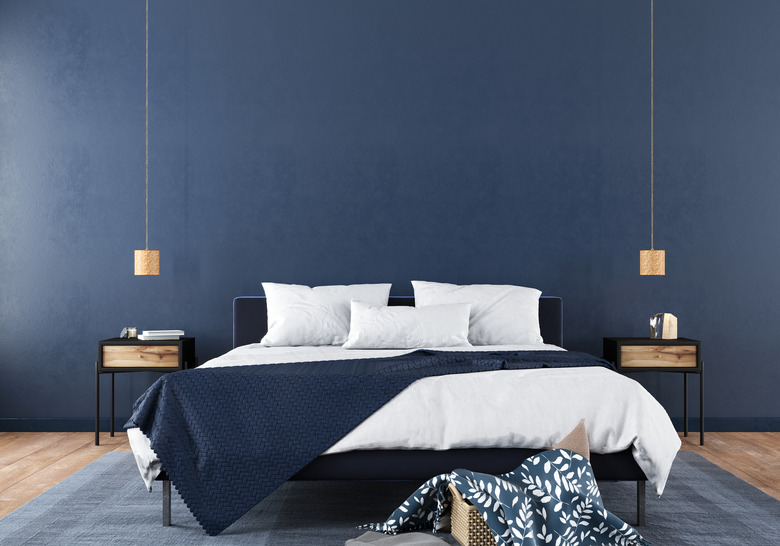How To Mix Paint To Make Midnight Blue
We may receive a commission on purchases made from links.
Midnight blue is a very dark shade of blue that might look black in some lights; it's considered the darkest shade of blue. You might want to use this shade of paint for a feature wall or to add accents to some parts of your home. It can sometimes be used instead of black as a dark neutral. If you can't find the exact shade of midnight blue paint you want at a store, it's possible to mix your own. Read on to find out what you need and how to do it.
Things Needed
-
Mixing stick or drill with mixing attachment
How to Mix Paint to Make Midnight Blue
1. Select Your Preferred Blue
Midnight blue is a really dark blue that contains a lot of black. Before you turn a "regular" blue into midnight blue, select a shade of blue that you like and that works for your purposes. Opt for a dark blue so you don't have to add too much black to turn it into a midnight shade. A sky blue containing a lot of white wouldn't be a good choice because the end result would be more gray than midnight.
Blues can have warmer and cooler undertones. There's no right or wrong answer when it comes to choosing shades of blue, but it's good to understand a bit about color theory and undertones before you begin your decorating project.
2. Add the Blue and Black to a Mixing Container
In paint stores, you will see paint colors being mixed directly in the paint tin, but unless you're sure you need a whole tin of midnight blue, it's best to use a separate mixing container. Add the blue paint to the mixing container first. Then, little by little (about 1 teaspoon at a time), add black paint. Remember that you can always add more black paint until you get the midnight blue shade you want, but you can't take it away.
3. Stir Well
Start with stirring the paint mixture with a wooden stirring stick until you're happy with the shade of midnight blue you've created. If you have a drill with an attachment for blending paint, now is the time to use it. It will speed up the stirring process and better eliminate streaks. However, if you don't have one, it doesn't matter too much. Just keep stirring with a wooden stirrer for several minutes until the two shades are well blended.
4. Repeat if Necessary
Once it's all blended, check whether you're happy with the shade. You can always repeat these steps until you have the perfect shade of midnight blue. It's also good to remember that the paint will dry a bit darker than it looks in the tin when wet.
